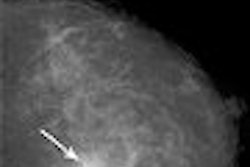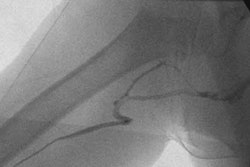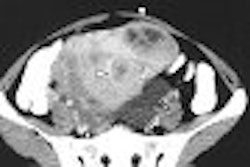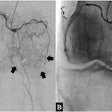VIENNA - Interventional radiology, according to Dr. Frederick Keller, is in need of an extreme makeover. If the specialty had to choose a quote from Shakespeare to describe the overall health of its practice, it would probably select something from Hamlet -- perhaps the "To be or not to be" introduction from the prince's famous soliloquy.
Keller, an interventional radiologist and director of the Dotter Interventional Institute at Oregon Health and Science University in Portland, OR, delivered the Josef Rösch honorary lecture, "Interventional Radiology: Quo Vadis?" at the European Congress of Radiology (ECR) on Monday afternoon.
He said there are four threats to the survival of the specialty:
- Turf battles with loss of procedures
- Stagnation of training
- Lack of recognition and identity
- Poor representation by diagnostic radiology
For example, Keller said that in 1988 more than 85% of noncoronary percutaneous transluminal angioplasty (PTA) and stent procedures were conducted by interventional radiologists. By 2005, this percentage had eroded to less than 50%.
Training of new interventional radiologists has also shown a corresponding decrease. There are currently 98 programs for vascular and interventional radiology in the U.S. with 189 available positions, of which 120 are filled -- resulting in a 37% vacancy rate.
In comparison, the American College of Cardiology (ACC) Web site lists 108 programs that offer training in peripheral artery disease. That specialty has also undergone a facelift; cardiologists are now referring to themselves as cardiovascular specialists.
In addition to encroachment by cardiologists -- or cardiovascular specialists -- gastroenterologists, nephrologists, urologists, and pulmonologists have seen the potential of staking a claim and have acted on it. The primary reason these specialties have been able to accomplish the procedure grabs is that interventional radiology traditionally has minimal patient control and is dependent on referrals for its business, Keller said.
The training of interventional radiologists must undergo a sea change, according to Keller. If the current educational paradigm holds, the specialty will only succeed in turning out clones of itself -- skilled professionals limited to only their technical skills.
For interventional radiology to revitalize itself, it needs to seek out and encourage trainees from other medical disciplines, Keller said. The training in the U.S. should be on a new clinical pathway that includes nine months of vascular and interventional radiology during PGY 4 and three months during PGY 2 or 3, seven months of clinical training and research in PGY 2-5, and a full-year fellowship in PGY 6, he suggested.
Diagnostic radiology came in for its share of criticism as well. Keller noted that although 98.1% of the radiology procedures performed in an unnamed university hospital in 2005 were conducted by diagnostic radiologists, the remaining 1.9% was performed by interventional radiologists and contributed 32% of the total revenue for the year.
Radiation therapy is recognized as a distinctly different division under the umbrella of radiology. Keller said he would like to see the same partition for diagnostic and interventional radiology.
Name recognition is also an enormous problem for interventional radiology. In a survey of nearly a 1,000 U.S. adults funded by the Dotter Institute and the Society of Interventional Radiology (SIR), approximately 2% knew what an interventional radiologist did. In contrast, 96% knew what a pediatrician did, 90% could explain what a cardiologist did, and even 20% recognized the practice of an endocrinologist.
Keller suggested that the specialty seriously consider changing its name to image-guided surgery, endosurgery, or minimally invasive surgery -- a branding that recognizes what medicine interventional radiologists actually practice. With a new name comes a new identity and new opportunities for the specialty to redefine itself and its role in the healthcare continuum.
Finally, the specialty absolutely must increase its patient management skills, Keller said. Unless it acquires direct access to its patients and manages those individuals, he foresees interventional radiology at risk of becoming "just a blip on the medical oscilloscope."
Keller cited a prescient observation made by Dr. Charles Dotter in the American Journal of Roentgenology more than a quarter century ago: "If we don't assume clinical responsibilities for our patients, we will face forfeiture of our territorial rights based solely on imaging equipment others can obtain and skills others can learn" (AJR, November 1980, Vol. 135:11, pp. 997-998).
By Jonathan S. Batchelor
AuntMinnie.com staff writer
March 7, 2006
Related Reading
Professor Adam looks at ECR 2006 and beyond, March 2, 2006
Angio labs readying for digital conversion, February 6, 2006
MRI-guided cancer treatment, February 1, 2006
US guidance keeps central catheter placement on target, January 11, 2006
Interventional rads still lead in peripheral arterial interventions -- for now, January 26, 2005
Copyright © 2006 AuntMinnie.com



















